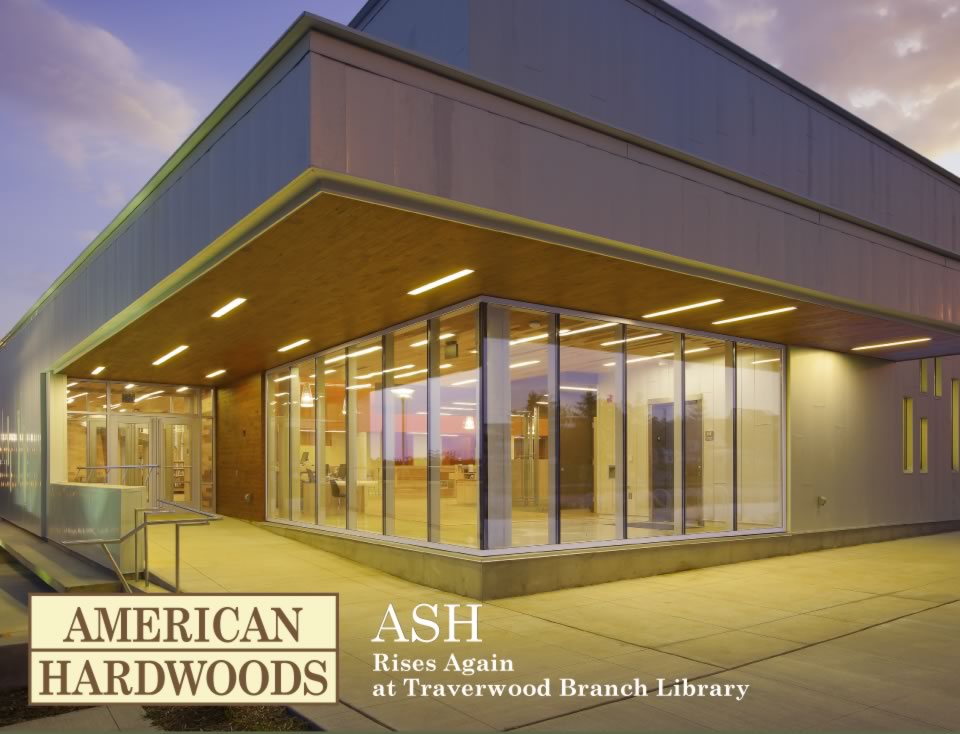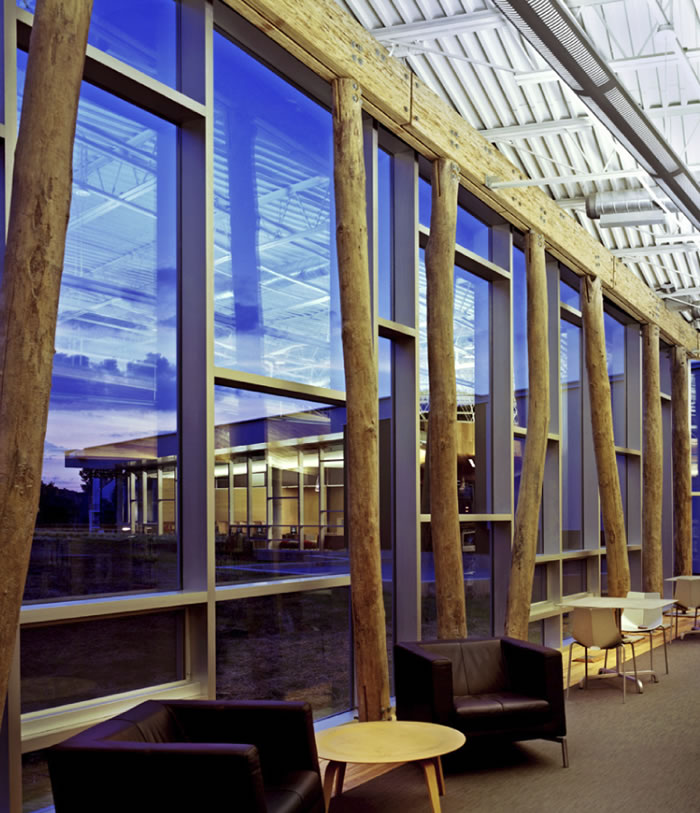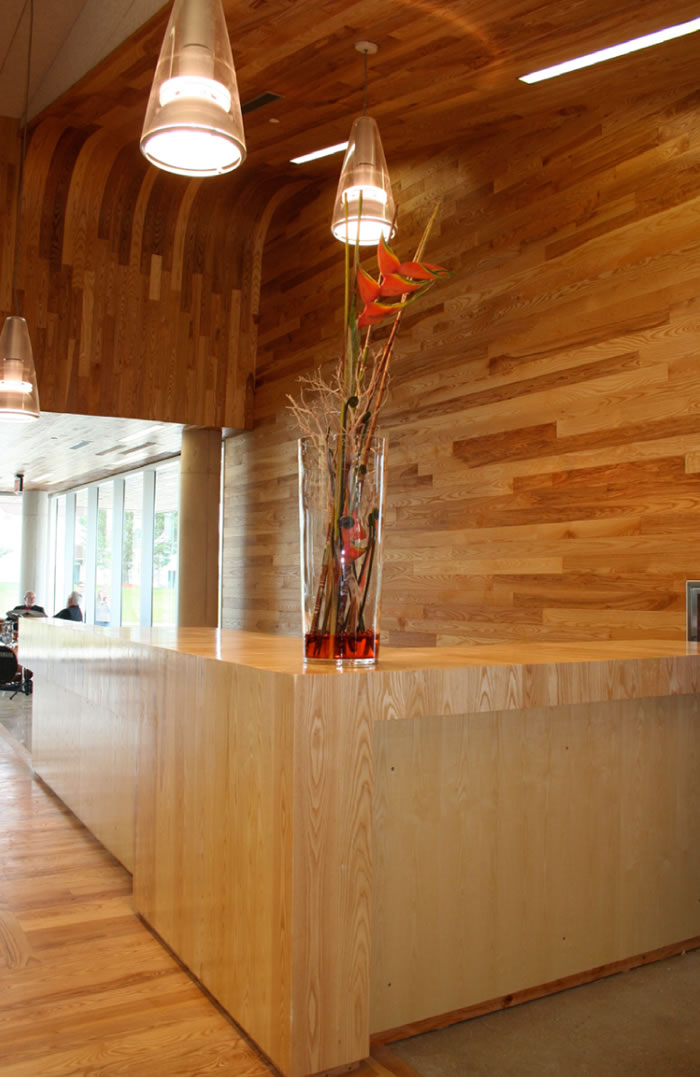

Photo courtesy – © Justin Maconochie Photography
The Traverwood Branch Library in Ann Arbor, Mich., is more than a building with books; it’s a 16,500-square-foot lesson in sustainable building and design. Built on four acres of green space, the L-shaped building preserves and maintains the biodiversity of the natural environment, while celebrating the rebirth of local ash trees—victims of the emerald ash borer. “We had an unexpected, unique opportunity with the ash trees,” noted architect Cory Lavigne, of inFORM Studio, Northville, Mich. “When you can use a local material, or in this case a damaged material that is on site, it makes a strong sustainability statement. Aside from the fact that it is a durable hardwood and well suited to our uses, the intention to harvest and use the wood as a viable indigenous material also allowed us to take the ash and tell a story with it.” Lavigne called upon artisan woodworker John Yarema to direct the reclamation of the ash. Draft horses were used to help move the hand-cut ash logs, which neutralized site disturbance by limiting damage to the surroundings and eliminating the need for fossil-fuel burning machinery. The logs were then dried for one year in Yarema’s shop. “I loved inFORM’s no-limits approach, and the challenge of doing things that I hadn’t done before was very alluring,” said Yarema. “I also liked the way they let me run with a lot of the design, which I feel really added an organic flair to the woodwork. I was able to take the ash and use it to give this project a timestamp—a slice in time. We couldn’t do this in three or four years, when the trees will be gone”
As a featured aspect of Traverwood Library, the fallen ash appears as interior flooring, wall panels, ceilings, and shelving. In addition, a row of ash columns lines a bank of windows, connecting onlookers to a nature preserve. “This was our first experience working with ash,” noted Lavigne. “It’s similar to oak in appearance and ranges in color from creamy white to chocolate brown. This project gave us an opportunity to showcase its beauty.” Lavigne designed the building to meet LEED standards. He opted, however, not to apply for certification, but rather funnel those funds back into the building. Its design is a balance of modern elements and the natural environment, and its location fulfilled an early commitment by the design team to maintain the established ecosystem and forms of wildlife inhabiting the parameters of the site. The Library’s woodwork is beautifully inviting, as well as educational to the library patrons who look at the salvaged ash and ask what damaged it. “By using the ash, we created a physical record of this historic moment, a visual and tactile testament to life and the destruction of the ash tree in Michigan and surrounding areas,” added Lavigne, “exposing generations to an autopsy report of an extinct species in the region.”

Photo courtesy – Ann Arbor District Library



